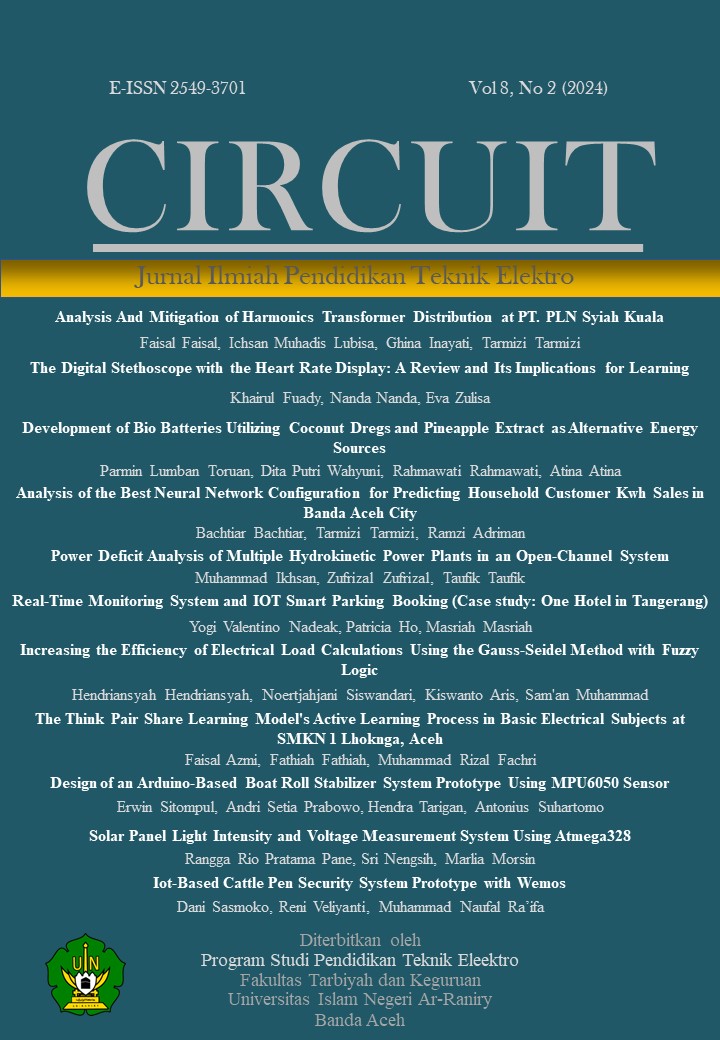Development of Bio Batteries Utilizing Coconut Dregs and Pineapple Extract as Alternative Energy Sources
DOI:
https://doi.org/10.22373/crc.v8i2.20933Keywords:
Alternative Energy, Coconut Dregs, Pineapple, Bio-batteryAbstract
Coconut and pineapple dregs contain ions that can be effectively used as energy sources. This study aims to evaluate the electricity generated from varying compositions of coconut dregs and pineapple juice in bio-batteries. The bio-battery paste is created using different ratios of coconut dregs and pineapple juice, along with electrodes (aluminum and graphite). An experimental method was employed. The results indicated that the highest voltage of 0.54 V and a current of 0.71 mA were achieved with 40 ml of pineapple juice added to the coconut dregs, whereas the lowest voltage of 0.40 V and a current of 0.01 mA were observed without adding pineapple juice. For the pineapple juice concentration, the highest voltage of 0.51 V and a current of 0.91 mA were obtained with 10 grams of coconut dregs, while the lowest voltage of 0.44 V and a current of 0.31 mA occurred with 40 grams of coconut dregs. The concentration of coconut dregs and pineapple juice significantly affects the voltage produced, while the current is significantly influenced by the concentration of coconut dregs but not by the concentration of pineapple juice.
Downloads
Published
Issue
Section
License
Authors who publish in CIRCUIT: Jurnal Ilmiah Pendidikan Teknik Elektro agree to the following terms:
- Authors retain copyright and grant the journal right of first publication with the work licensed under a Creative Commons Attribution-ShareAlike 4.0 International License (CC BY-SA 4.0) that allows others to share and adapt the work with an acknowledgement of the authorship and initial publication in this journal
- Authors are able to enter into separate, additional contractual arrangements for the non-exclusive distribution of the journal's published version of the work (e.g., post it to an institutional repository or publish it in a book), with an acknowledgment of its initial publication in this journal.
- Authors are permitted and encouraged to post their work online (e.g., in institutional repositories or on their website) prior to and during the submission process, as it can lead to productive exchanges, as well as earlier and greater citation of published work. (See The Effect of Open Acces)

